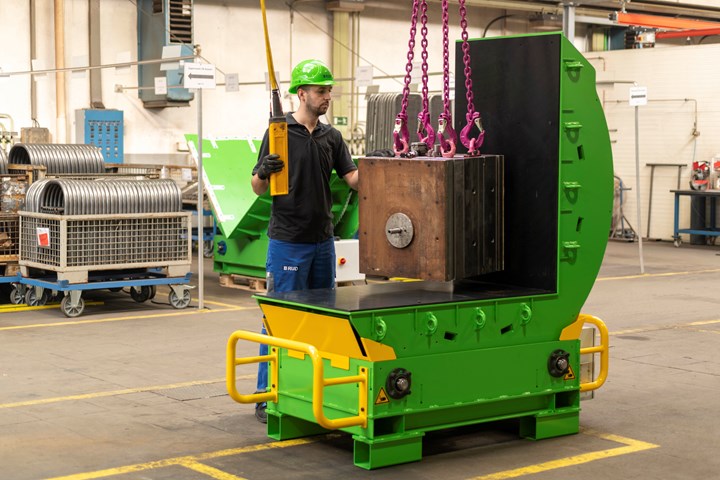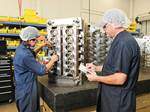Injection Molding: Mold Mover Made More Ergonomic
RUD’s newest Tool Mover reduced the height of the working surface on the smallest model to 595 mm (about 2 ft).
German firm RUD (Aalen) has redesigned its Tool Mover with improved ergonomics in mind. Used for unmounting heavy tools from injection molding machines or dismantling machine parts weighing several tons that previously required a crane and at least two operators, the Tool Mover simplifies these tasks and its new lower working height means operators can labor in a more natural posture. RUD is represented in the U.S. by Caldwell Inc. (Rockford, Ill.).
RUD’s Tool Mover is available in multiple configurations, with the smallest Slim version able to handle weights of up to 10 tonnes on its 800-mm table surface. The Tool Mover can axially rotate tools and machine components weighing up to 64 tonnes, turning them smoothly in their center of gravity. The system’s work table has a frequency-regulated drive to ensure smooth stops and starts.

RUD’s Tool Mover was redesigned with operator ergonomics in mind.
RUD says the Tool Mover can turn over objects at least twice as quickly as a crane, performing the task in less than a minute. Plugs or cooling hoses that usually have to be unplugged during component maintenance for safety reasons when using a crane can be left in place with the Tool Mover. An alternative to an overhead crane, the Tool Mover can be moved easily with a fork lift truck or pallet truck, allowing molders to rethink where and how maintenance procedures and logistics are performed.
Made in Germany, the Tool Mover is available in six standard sizes, with the smallest version featuring a table area of 800 by 1300 mm (31 by 51 in) and the ability to handle up to 10 tonnes. The largest THS 64 can manipulate components weighing up to 64 tonnes, with a 3500 by 2500 mm table area (138 by 98 in). RUD can outfit the Tool Mover with different tabletop surfaces, including anti-slip polyurethane on request. Optional add-on parts include guard brackets or a protective sheet to prevent operators reaching into the machine. A light curtain or protective fence can also be supplied to optimize safety, and a special working platform to ensure operator safety when installing attachment points and lashings is also available as an option. The system’s wireless control allows operators to manipulate the rotating table from outside the “danger zone”.
Related Content
-
What to Look for in High-Speed Automation for Pipette Production
Automation is a must-have for molders of pipettes. Make sure your supplier provides assurances of throughput and output, manpower utilization, floor space consumption and payback period.
-
Understanding the Effect of Pressure Losses on Injection Molded Parts
The compressibility of plastics as a class of materials means the pressure punched into the machine control and the pressure the melt experiences at the end of fill within the mold will be very different. What does this difference mean for process consistency and part quality?
-
Back to Basics on Mold Venting (Part 2: Shape, Dimensions, Details)
Here’s how to get the most out of your stationary mold vents.






